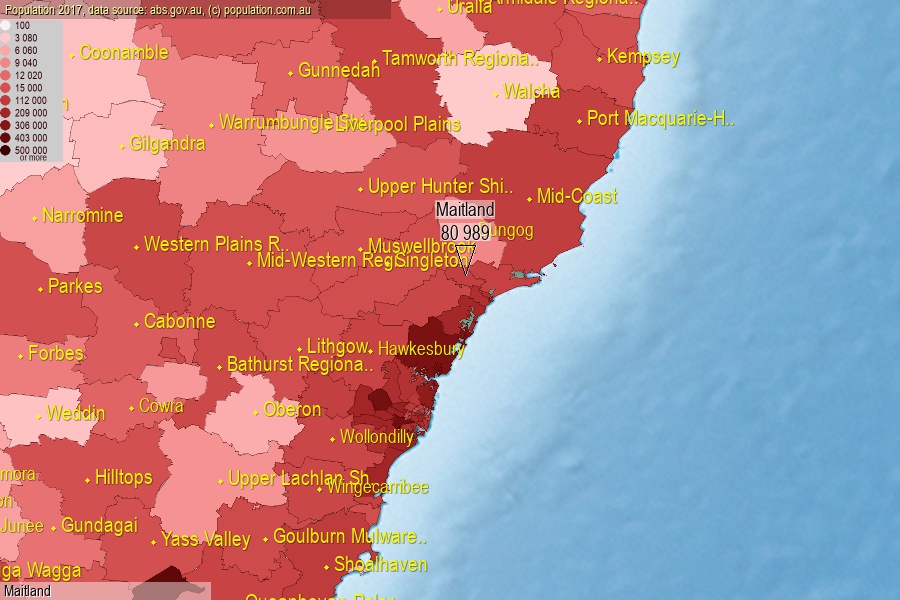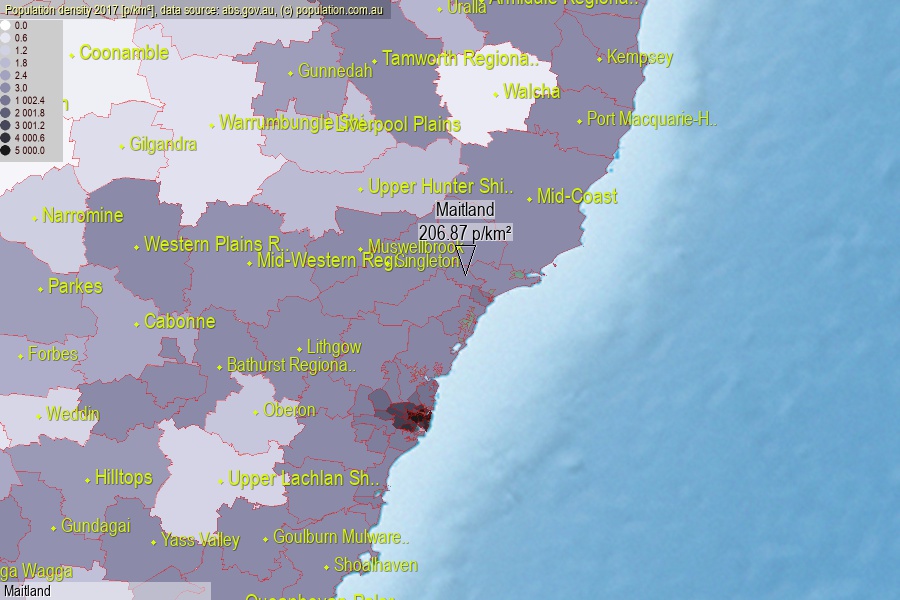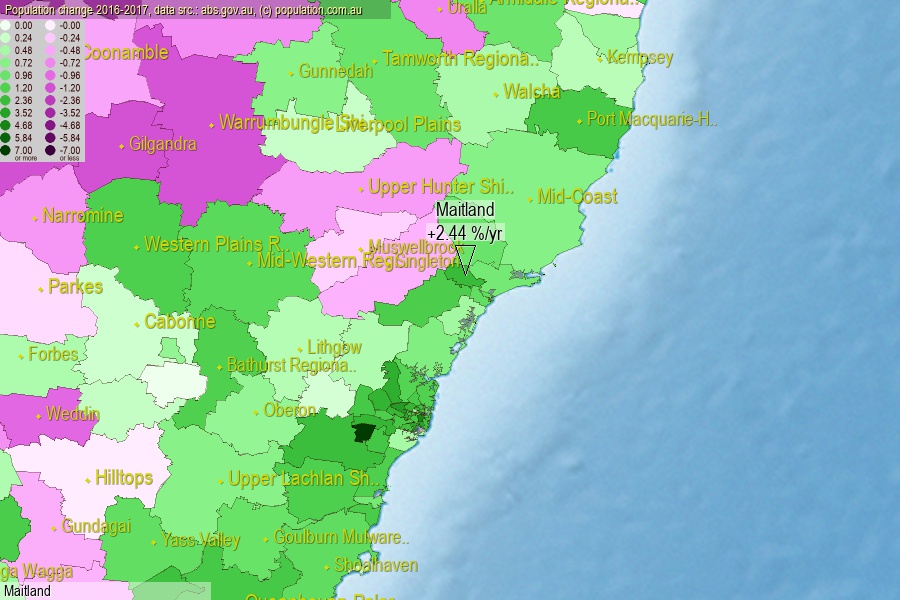 population.com.au
population.com.auLast official estimated population of Maitland City (as Local Government Area) was 80 989 people (on 2017-06-30)[2]. This was 0.33% of total Australian population and 1.018% of NSW population. Area of Maitland is 391.50 km², in this year population density was 206.87 p/km² . If population growth rate would be same as in period 2016-2017 (+2.44%/yr), Maitland population in 2025 would be 98 186. [0]



Click to enlarge. Maitland is located in the center of the images.
Population [people], population density [p./km²] and population change [%/year] [2]
[1996-2001] +1.75 %/Y
[2001-2002] +2.83 %/Y
[2002-2003] +2.65 %/Y
[2003-2004] +2.15 %/Y
[2004-2005] +2.52 %/Y
[2005-2006] +2.49 %/Y
[2006-2007] +2.58 %/Y
[2007-2008] +1.69 %/Y
[2008-2009] +1.55 %/Y
[2009-2010] +1.92 %/Y
[2010-2011] +1.99 %/Y
[2011-2012] +2.99 %/Y
[2012-2013] +2.58 %/Y
[2013-2014] +2.47 %/Y
[2014-2015] +2.22 %/Y
[2015-2016] +2.18 %/Y
[2016-2017] +2.44 %/Y
[0] Calculated with linear interpolation from officially estimated population
[1] Read more about LGA and Australian Statistical Geography Standard (ASGS) on abs.gov.au
[2] Population data from Australian Bureau of Statistics (Population and density: 2017; change: 2016-2017)
[3] Digital Boundaries: Australian Statistical Geography Standard (ASGS) 2016.